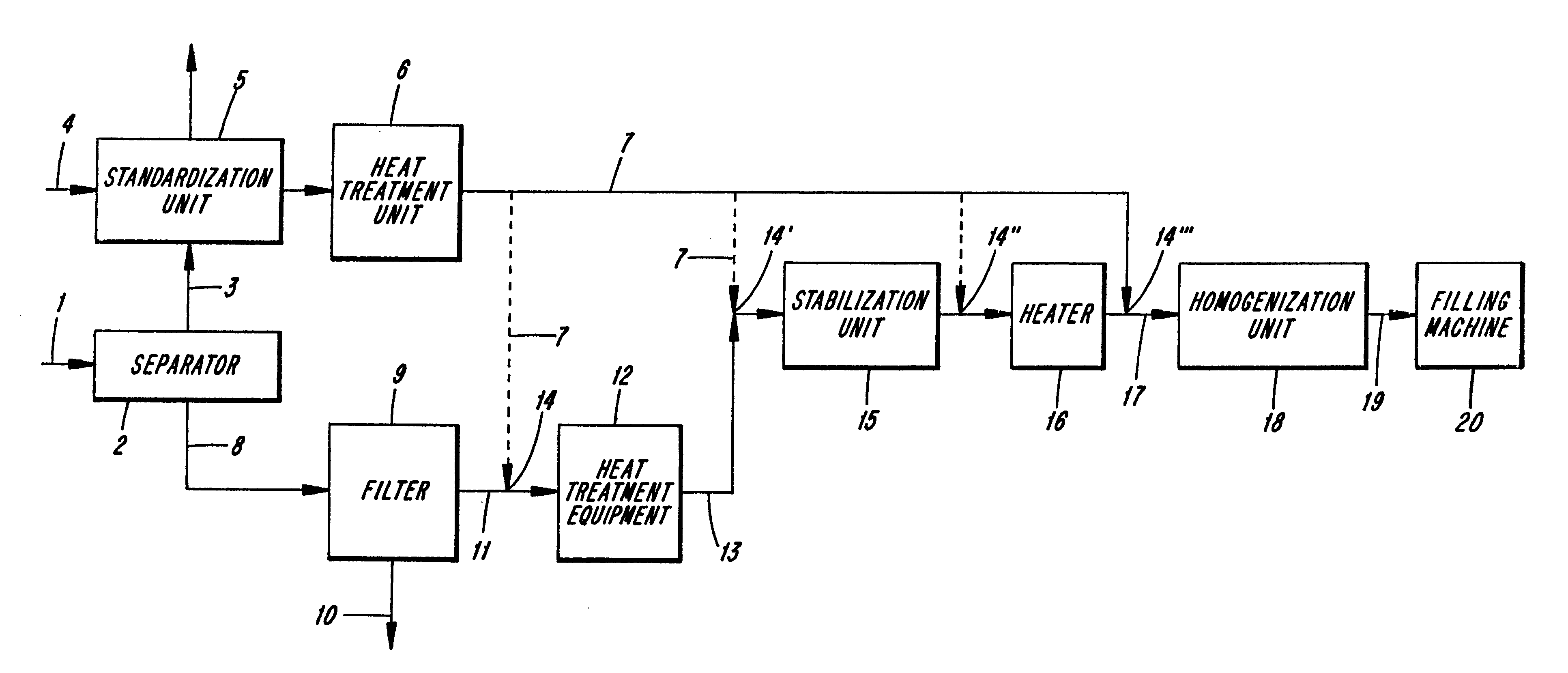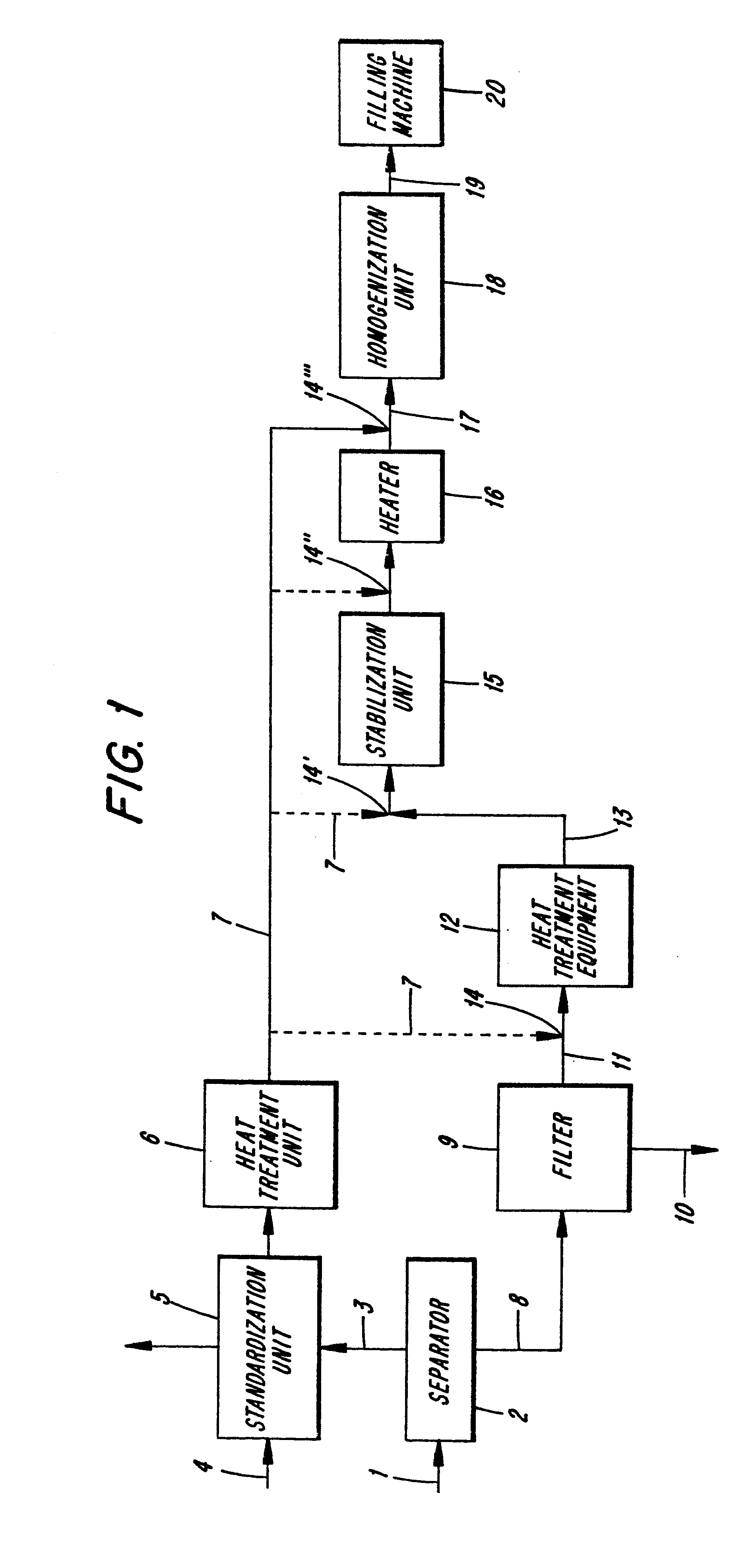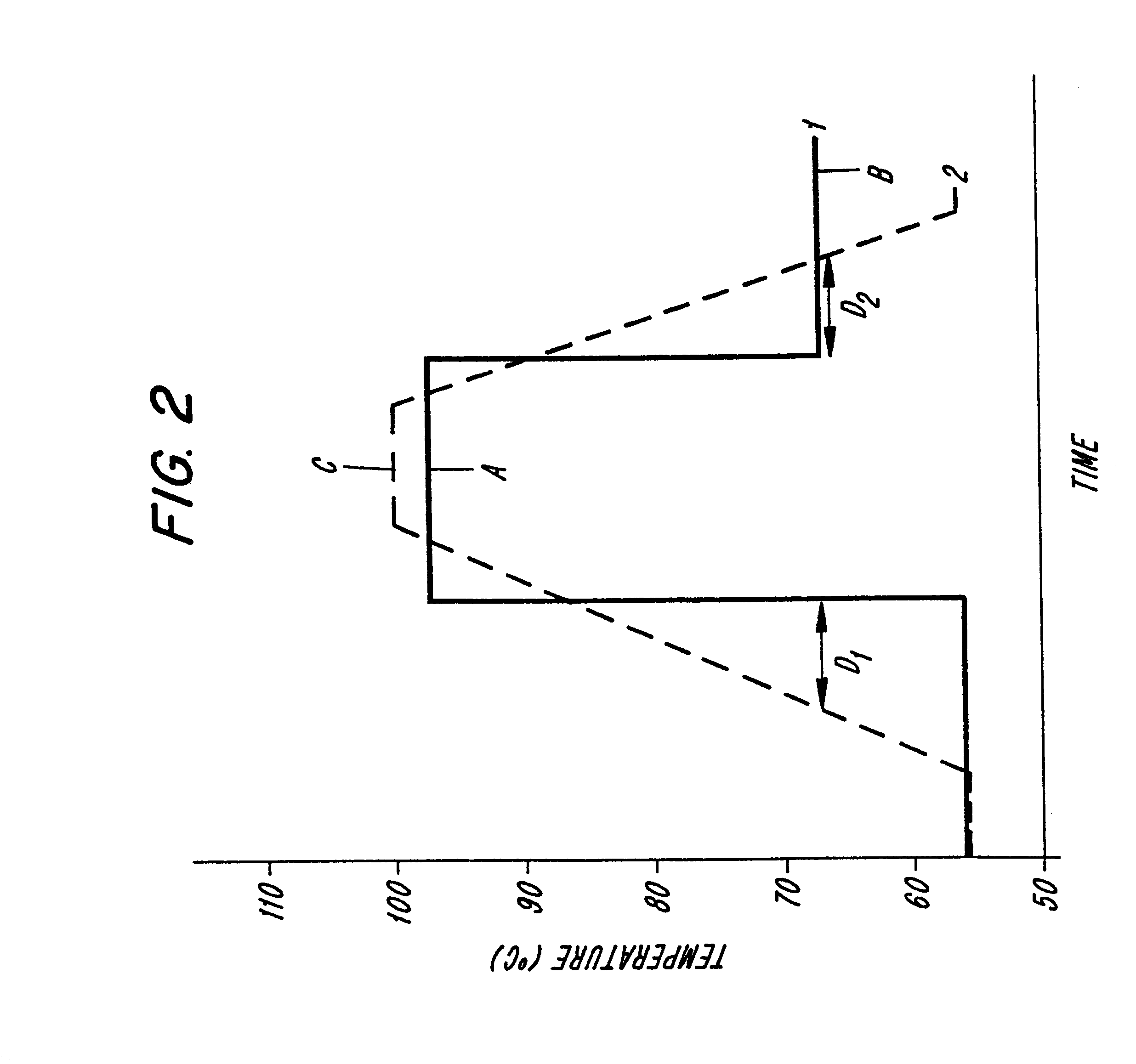Method for producing sterile, stable milk
a stable, sterile technology, applied in dairy products, other dairy technologies, food preservation, etc., can solve the problems of economic loss of refrigerated foods, subsequent spoilage, and more intractable problems
- Summary
- Abstract
- Description
- Claims
- Application Information
AI Technical Summary
Problems solved by technology
Method used
Image
Examples
Embodiment Construction
Skim milk was treated according to the above-described method as follows. The skim milk was subjected to filtration 9 with a filter having a pore size as indicated in Table 3 below. After filtration, the permeate 11 was sterilized by heat treatment 12 for the time and at the temperature indicated in Table 3. The sterilized permeate 13 was stabilized and underwent enzyme deactivation in one or two steps by heat treatment 15 and / or 16 for the time(s) and at the temperature(s) specified in the table. The results of six separate treatments and the conditions under which the permeate was treated are set forth in Table 3 below. All milk products were sterile and stable for at least 6 weeks.
Stability of the milk product as shown in Table 3 was measured by the amount of amino-N in the milk product after a period of 6 to 12 weeks (as specified in table) under ambient conditions (40.degree. C.). The amount of amino-N is measured as described below and as set forth by Chism, et al. in Dairy Sc...
PUM
 Login to View More
Login to View More Abstract
Description
Claims
Application Information
 Login to View More
Login to View More - R&D
- Intellectual Property
- Life Sciences
- Materials
- Tech Scout
- Unparalleled Data Quality
- Higher Quality Content
- 60% Fewer Hallucinations
Browse by: Latest US Patents, China's latest patents, Technical Efficacy Thesaurus, Application Domain, Technology Topic, Popular Technical Reports.
© 2025 PatSnap. All rights reserved.Legal|Privacy policy|Modern Slavery Act Transparency Statement|Sitemap|About US| Contact US: help@patsnap.com



